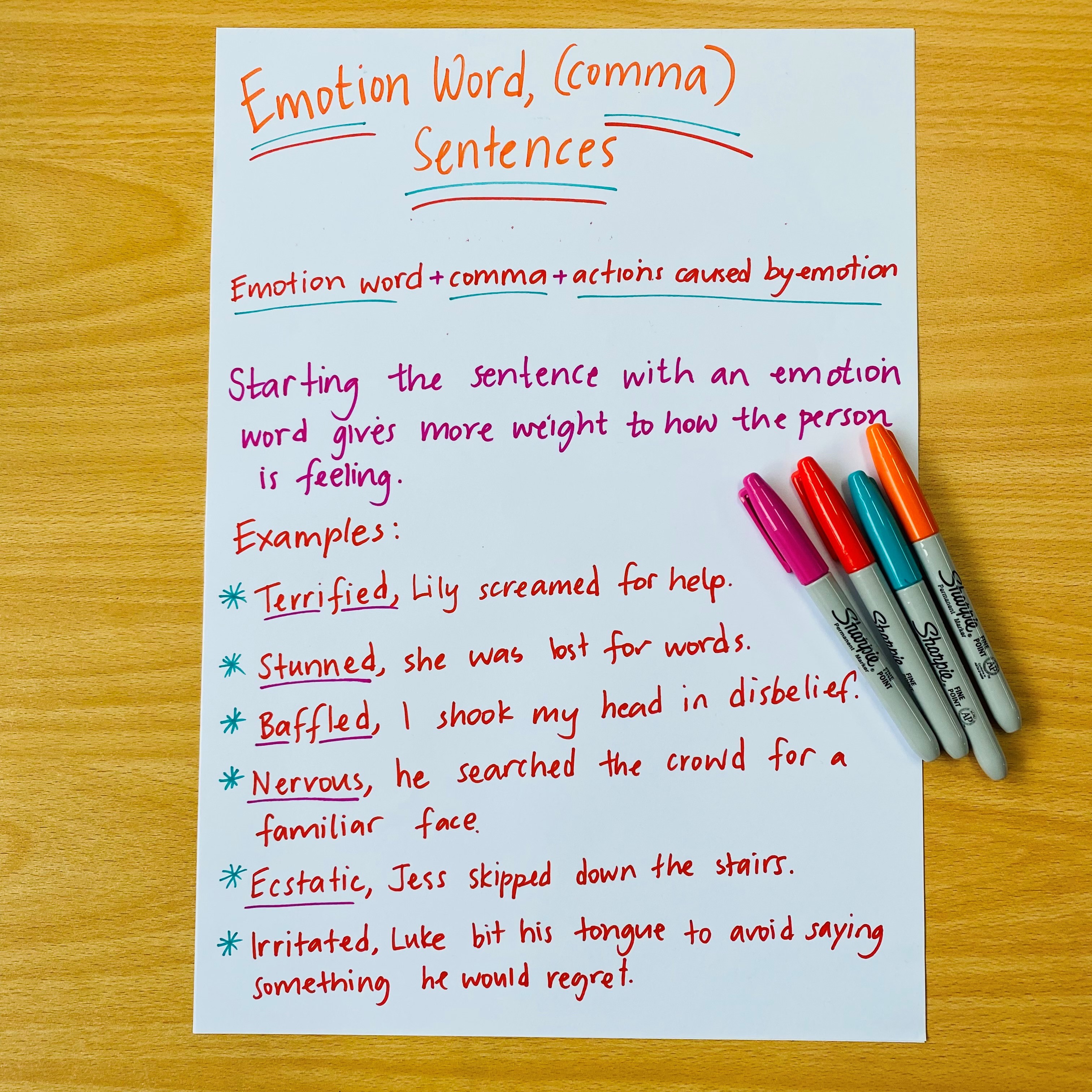Grab a free trial and go bananas!
- Download all lessons to PDF
- Download and edit all resources
- Share lessons with your colleagues
- Save favourite lessons for later

Super Sentence Structures - Verb, Person Sentences
Learning Intention: Enhancing my writing with ‘Verb, Person’ Sentences.

Super Sentence Structures - Verb, Person Sentences
Learning Intention: Enhancing my writing with ‘Verb, Person’ Sentences.
- Markers
- Whiteboards
- Paper
- Post-it notes
Grade 5 - AC9E5LA04
Grade 4 - AC9E4LA06
Grade 4 - AC9E4LA04
- I can construct a sentence/s starting with a verb, followed by a person’s name/personal pronoun to add interest to my writing.
Modelled
Bring attention to the lesson’s learning intention and introduce the mini-unit which will expose students to a range of sentence structures, as we work to enhance their writing ability - for both fiction (e.g. narrative text types) and nonfiction pieces (e.g. information report text types).
Introduce students to the structure that will be explored today - Verb, Person, showing them a written example- Running, Kate nearly tripped over her own feet. Ask students what they think the rule might be for this sentence structure. After some discussion, share the rule with them: The sentence starts with a verb to give it importance (this shows the reader that something exciting and significant is happening). The verb needs to be followed by a comma, and then either a person’s name or personal pronoun (e.g. he, she, they etc), followed by the rest of the sentence - i.e. Verb + comma + name/personal pronoun + rest of sentence.
Guided
Think aloud as you orally construct a few Verb, Person sentences, then encourage students to do the same. Record some examples on the board. Discuss the effectiveness of these sentences - what makes them engaging? What impact do they have on the reader? Ask students if a Verb, Person sentence would be most effective in a fiction or nonfiction text. Discuss why using this sentence type would work well in fiction, as it helps to create excitement and build tension, but not quite so well in a nonfiction text.
As a class, brainstorm a list of verbs and model constructing some more sentences before having students do the same, practising together in pairs/small groups. Share student examples and record these on the board/butcher’s paper. Ensure students are including the comma as they share their example, allowing them to add where necessary. Discuss why it is necessary to pause at the comma (it helps to make sense of the sentence and to engage the reader).
Independent
Students will now have a go at independently selecting 3-4 verbs (more/less depending on ability level) from the class brainstorm, using these as sentence starters to practise writing Verb, Person sentences of their own.
Allow 10 minutes before stopping students and checking if any need redirection or more detailed scaffolding.To finish the lesson, students can share and compare the Verb, Person sentences they have constructed, reminding them to pause at the comma.
- Support Students: Provide students with some picture prompts (e.g. images of people doing various things, e.g. swimming, dancing, sleeping etc) to guide them.
- Extension Students: Challenge students to include as much detail as possible in their sentences - an extension could also be to include an adverb (ie. Verb + adverb + comma + rest of sentence).
- Formative assessment:
- Have my students successfully constructed ‘Verb, Person’ sentences?
Sign up for hundreds more lessons like this!
Access over 600 lessons, 50 units and oodles of premium editable resources to suit the literacy needs of K-6 students.Start a 7 day free trial today!


